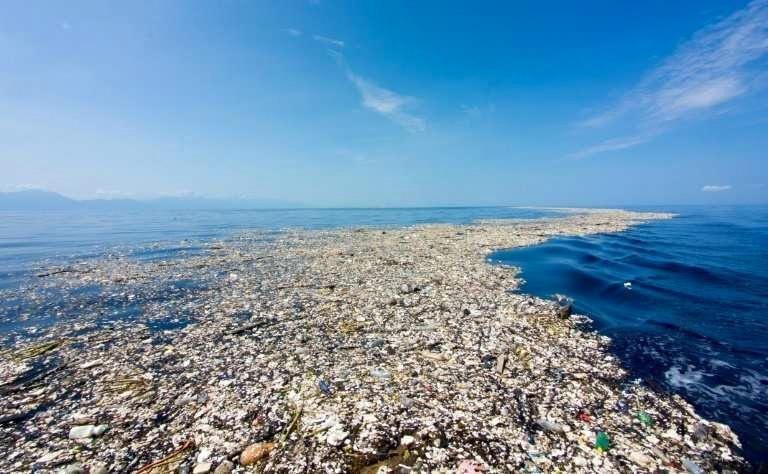#EXPLAINED: Microplastics
#EXPLAINED is an ongoing series where we dive into one of the many buzzwords used in the environmental space or other concepts you may have heard of, explaining what they mean and any key theories within them. The goal is to make environmental concepts more approachable and exciting to learn about.
Microplastics have been documented for quite a while, but they are an ongoing topic you’ve probably heard discussed within the mainstream environmental movement of today. While many have an idea of what they are, their sources and the risks they pose aren’t always as well understood. In addition, new research is constantly being conducted. These tiny plastics, which have been found everywhere from Antarctic ice to the depths of the oceans, are the topic of today’s blog post.
What are microplastics
A handful of microplastics. Via Geographical Magazine.
Microplastics are exactly what they sound like - they are tiny pieces of plastic, sometimes even too small for the naked eye to see. Anything smaller than 5mm is considered a microplastic and there are two main categories. Primary microplastics are intentionally manufactured to be small in size, like exfoliating microbeads used in cosmetic scrubs. Secondary microplastics, on the other hand, are the result of larger plastic items like bottles, containers, etc. breaking down over time.
Sources of microplastics
According to the International Union for Conservation of Nature (IUCN), the top three sources of primary microplastics in our oceans are:
Synthetic fibres released during laundering textiles (34.8%)
Erosion of tires while driving (28.3%)
City dust (24.2%) which is a broad category referring to everything from the erosion of footwear soles to the abrasion of building coatings in cities
One interesting note - despite the personal care industry receiving a lot of negative attention for their use of microbeads, this industry accounts for only 2% of the global release of microplastics in our oceans according to IUCN. Obviously, the issue with personal care was that the addition of these microbeads was intentional, but many companies within the space were quick to make necessary changes and governments took action too. In Canada, for example, as of 2018 it is prohibited to manufacture or import products that contain plastic microbeads.
As far as secondary microplastics, we’ve yet to find a resource as detailed as the IUCN’s on primary microplastic sources. It is widely held, however, that single-use plastics are the main source of secondary microplastics in the environment. Research from the United Nations indicates that the following are the most common single-use items:
Cigarette butts
Plastic drinking bottles and caps
Food wrappers
Grocery bags
Lids
Straws and stirrers
Other plastic bags
Take-away containers
As you can see, microplastics entirely originate from anthropogenic sources and as you’d suspect, their concentration is higher where people are. In fact, research close to home has discovered that microplastics are higher in the Great Lakes that are closer to people (Lake Ontario) than those that are less populated (Lake Superior).
Marine environments and microplastics
Charles Moore, who first identified the Great Pacific Garbage Patch, also began studying microplastics after discovering them at the site two year slater. Via Forbes.
Most of the research on microplastics has centred around marine environments, because these environments seem to be a microplastic “sink”. There is so much plastic in our oceans that some research says it will carry more plastic by weight in 2050 than fish. It’s tough to know how exactly how much microplastic there is specifically because its size makes it harder to capture and estimate, but some suggest that in microplastic “hotspots” there might be as much as 1.9 million pieces per square meter. This is an enormous number! In our marine environments, organisms as small as zooplankton may ingest them. This can create gastrointestinal blockages and can even trick animals into thinking they are “full” causing them to starve. Microplastics can also serve as vectors for toxic chemicals to enter animals, given these chemicals often adhere to plastic surfaces. These are just some of the problems associated with microplastics though many more, including microplastics effects on terrestrial environments, exist.
Potential risks to humans
With the ubiquitous spread of microplastics, you may be wondering whether they’ve been detected inside humans - and they have. We come into contact with microplastics through inhalation, ingestion, and even through absorption via our skin. It’s estimated that we may ingest anywhere from dozens to 100,000 microplastics each day and recent research determined that microplastics have made their way to human blood. This research made headlines because it described a method to actually detect microplastics in blood samples, which was a first for science. PET, or polyethylene terephthalate, was found in more than half of those tested as were several other types of plastic. PET is commonly used in food and drink containers as well as in textiles. What happens once these microplastics enter the bloodstream, however, requires further research. While researchers say it is plausible that microplastics are transported to the organs via the bloodstream, the effects they may have on organs is unknown.
What can be done
Ditching plastic waste for alternatives can play a big role in reducing our single-use plastic.
“Plastic is not the root of the problem, but rather the single-use lifestyle we have become accustomed to.” This is a quote from researchers that we feel illustrates the point.
As an individual, there are some steps you can take to reduce your contribution to the microplastic problem.
Reduce your single-use plastic, where you can. Grocery shop low/zero waste by visiting a refillery, bring your own bottle for drinks, and forgo plastic bags for reusable. If you live in the east end (and soon to be the west end) of Toronto, you can skip single-use takeout waste by ordering from Suppli!
Consider using something like the Cora Ball or Guppyfriend Laundry Bag to help trap synthetic waste from your laundry.
Reduce how much you drive, if you can. Try to walk, take rail transportation, or bike. This is great for the planet in so many other ways too!
We can’t do it all alone, though. Like anything, we also need entire systems to change to combat the microplastic problem. For one, we need a more transparent and simpler recycling system, according to researchers. We also need to ensure that adequate infrastructure and waste management are implemented and that consumers are well educated on end-of-life management of items.
Cool science
Some more from the world of microplastic research for you to geek out on:
This device, that collects microplastics from tires as you drive
Removing microplastics from waste water using… okra?
This 18 year old Google Science Fair winner’s solution to removing microplastics
Cover photo courtesy of NASA



